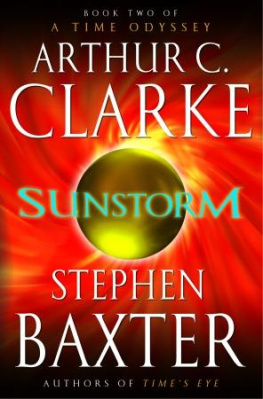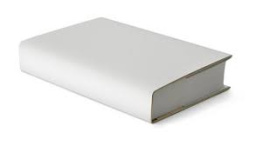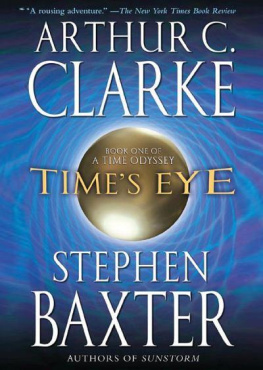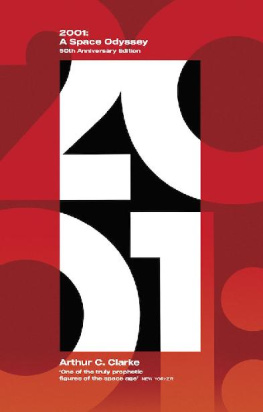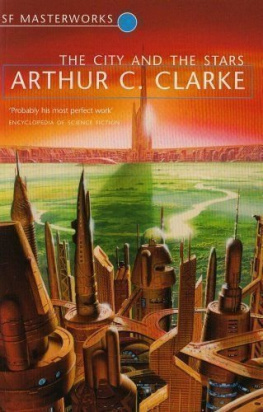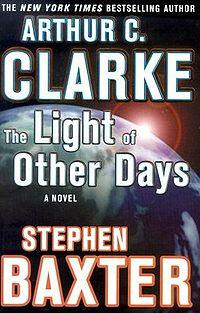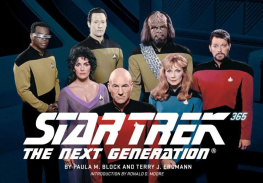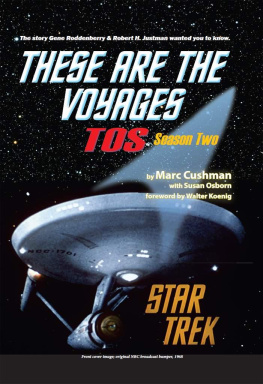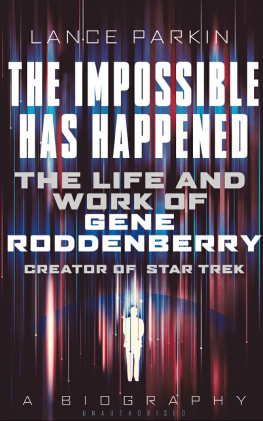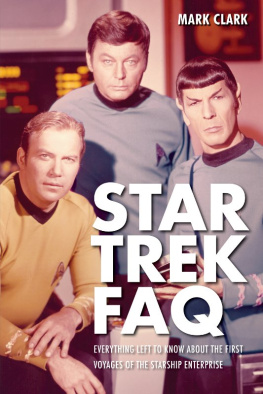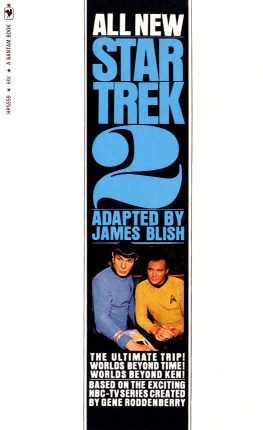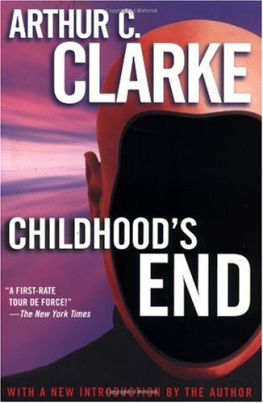PROFILES OF THE FUTURE
by
ARTHUR C. CLARKE
An inquiry into the Limits of the Possible Revised edition
4
POPULAR LIBRARY - TORONTO
Published by Popular Library, CBS Publications, CBS Consumer Publishing, a Division of CBS Inc., by arrangement with Harper & Row, Publishers, Inc.
September, 1977
Revised Edition. Copyright @ 1958, 1959, 1960, 1962, 1973 by A.rthur C.
Clarke. Copyright Q 1960, 1961, 1962 by H. M. H. Publishing Co. Copyright Q 1960 by Popular Mechanics Co.
Library of Congress Catalog Card Number: 72-6714
ISBN: 0-445-04061-0
Portions of this book were first published in D. A. C. News, Holiday, Horizon, Playboy, Rotarian and Science Digest.
To my colleagues in the Institute of Twenty-First Century Studies, and especially to
HUGO GERNSBACK
who thought of everything
Printed In Ca
All rights reserved. No part of this book may be used or reproduced in any manner whatsoever without written permission except in the case of brief quotations embodied in critical articles and reviews. For information address Harper & Row, Publishers, Inc., 10 East 53rd Stree4 New York, N.Y.
10022
CONTENTS
preface .. 7
Introduction ..11
1. Hazards of Prophecy: The Failure of Nerve 19
2. Hazards of Prophecy: The Failure
of Imagination ..30
3. The Future of Transport .. 40
4. Riding on Air .55
5. Beyond Gravity .64
6. The Quest for Speed . 79
7. World without Distance 88
8. Rocket to the Renaissance .100
9. You Cant Get There from Here 115
10.. Spitce, the Unconquerable - 130
11. About Time . 140
12 ..Ages ofPlenty.158
13. Aladdins Lamp....173
14. Invisible Men and Other Prodigies.... 180
15. The Road to Lilliput .. 192
16. Voices from the Sky 203
17. Brain and Body .. 217
18. The Obsolescence of Man . 232
19. The Long Twilight ...248
Chart of the Future
Preface to the Second Edition
This book originally appeared in 1962 and was based npon essays written during the period 1959-1961. Since it was concerned largely with ultimate possibilities, and not with achievements to be expected in the near future, even the remarkable events of the last decade have dated it very little. The chapter Rocket to the Renaissance, for example, now appears even more timely than when it was written, in 1960, nine years before the first men walked on the Moon.
What has changed-and in ways that no one could possibly have predicted-is our entire attitude toward the future, and especially toward technology as a whole. Profiles was one of the first samples of a deluge of books about the future; today, there are societies, foundations, journals devoted to the study of futuristics. The bibliog~-raphy is getting quite out of hand, and the best way of keeping track of it is through the World Future Society, and its excellent magazine, The Futurist.
I P.O. Box 19285, Twentieth Street Station, Washington, D.C. 20036.
7
Why has the future suddenly become respectable? There is certainly no simple or single explanation. It may be because most educated men have at last begun to understand the imperatives of change, and the urgent need to prepare for the inevitable revolutions in almost every field of human activity. Having lived through several revolutions in half a lifetime, I find it easier to accept the possibility that others are still to come.
And yet-this fascination with the future has generated its own antithesis, particularly in the socalled affluent or developed societies. There is a growing disenchantment with progress (however this may be defined) and even a feeling that, in many directions, we have already gone too far.
Part of this attitude, especially among the young, reflects the general malaise of the 1960s-the byproduct of traumatic assassinations, disastrous wars, and the other evils of that unhappy decade. Faced with these horrors, it was understandable that many should have decided it was all the fault of the scientific-technological approach-just as, forty years earlier, their equally sincere and intelligent precursors often blamed everything on capitalism. In each case, there was a lot of truth in the accusations; but it was not the whole truth, and the suggested cures were often worse than the disease.
By the end of the 1960s, the revulsion against the industrial societys excesses had led to a revulsion against reason itself. The drug culture, the yippies, the revival of interest in witchcraft, astrology, and eccentric religions, the tendency to adopt sandals and beads and to hitchhike to Katmandu-all these were part of the same pattern. And there was a curious irony in the fact that, at the moment in history when the East was desperately trying to acquire the technology of the West, the West was turning to the East in search of spiritual guidance.2
Hopefully, much good may, in the long run, emerge from this ferment of ideas and philosophies. The extrem-2 See my debate with Dr. Alan Watts on mysticism and technology, At the Interface, Playboy magazine, January 1972.
8
ists on both sides will cancel out; what will be left may be a greater reverence for the organic world, but not an uncritical acceptance of all that is natural. There are many natural things that should be stamped on, hardand much that is artificial that should be given the utmost encouragement.
I am happy to see that, even in the first edition of this book, I had come out strongly against some of the waste and stupidity of the modem industrial state (see, e.g-, Chapter 12), though I do not claim to be a premature Ecofreak. At the same time, I cannot pretend that this work will be of very much use to those who are struggling to rectify the Ms of todays societies. In fact, in some areas it may well be worse than useless, because I am not concerned with the problems of the near future, but with ultimate possibilities. The subtitle An Inquiry into the Limits of the Possible describes exactly what I had in mind. I can well imagine how discouraging it might be to those struggling to solve todays problems with todays technologies to read about the wonderful tools we will possessin the middle of the next century. The other day I had to take a taxi through the teeming slums of Calcutta to deliver a talk largely based on this book. In those circumstances, it was not easy to be optimistic about any future.
I would like to express my thanks to all those readers who have made useful comments on the original edition, and particularly to Robert E. Button, COMSATs Director of Goverdmental and Foundation Relations, who has used the work as a textbook for his University of Virginia classes for several years-and whose nudgings are partly responsible for this revision.
Some of the ideas in this volume have also been developed in more detail, or in other directions, in two later books: Voices from the Sky and Report on Planet Three.
ARTHUR C. CLARKE
Colombo, Ceylon, 1972
9
Introduction
It is impossible to predict the future, and all attempts to do so in any detail appear ludicrous within a very few years. This book has a more realistic yet at the same time more ambitious aim. It does not try to describe the future, but to define the boundaries within which possible futures must lie. If we regard the ages which stretch ahead of us as an unmapped and unexplored country, what I am attempting to do is to survey its frontiers and to get some idea of its extent. The detailed geography of the interior must remain unknown-until we reach it.
With a few exceptions, notably Chapter 8, 1 am limiting myself to a single aspect of the future-its technology, not the society that will be based upon it. This is not such a limitation as it may seem, for science will dominate the future even more than it dominates the present. Moreover, it is only in this field that prediction is at all possible; there are some general laws governing scientific extrapolation, as there are not (pace Marx) in the case of politics or economics.
Next page

